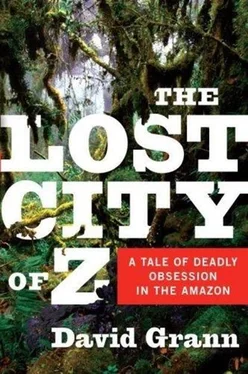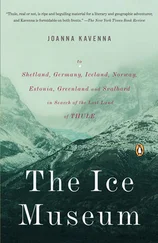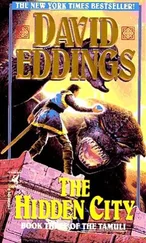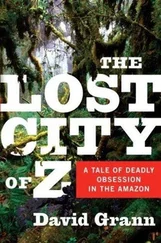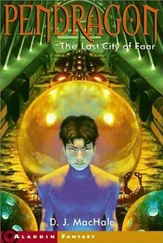1 ...8 9 10 12 13 14 ...85 Fawcett later became friendly with the novelist who most vividly conjured up this world of the Victorian adventurer-savant: Sir Henry Rider Haggard. In 1885, Haggard published King Solomon's Mines, which was advertised as “THE MOST AMAZING BOOK EVER WRITTEN.” Like many quest novels, it was patterned on folktales and myths, such as that of the Holy Grail. The hero is the iconic Allan Quatermain, a no-nonsense elephant hunter who searches for a hidden cache of diamonds in Africa with a map traced in blood. V. S. Pritchett noted that, whereas “E. M. Forster once spoke of the novelist sending down a bucket into the unconscious,” Haggard “installed a suction pump. He drained the whole reservoir of the public's secret desires.”
Yet Fawcett did not have to look so far to see his desires spilled on the page. After abandoning Theosophy, Fawcett's older brother, Edward, remade himself into a popular adventure novelist who for a time was hailed as the English answer to Jules Verne. In 1894, he published Swallowed by an Earthquake, which tells the story of a group of friends who are plunged into a subterranean world where they discover dinosaurs and a tribe of “wild-man that eats men.”
It was Edward's next novel, however, that most acutely reflected his younger brother's private fantasies-and, in many ways, chillingly foretold Percy's future. Called The Secret of the Desert and published in 1895, the novel appeared with a blood-red cover that was engraved with a picture of an explorer wearing a pith helmet who was dangling from a rope over a palace wall. The tale centers on an amateur cartographer and archaeologist named Arthur Manners-the very personification of the Victorian sensibility. With funding from a scientific body, Manners, the “most venturesome of travellers,” abandons the quaint British countryside to explore the perilous region of central Arabia. Insisting on going alone (“possibly thinking that it would be just as well to enjoy what celebrity might be in store for him unshared”), Manners wanders into the depths of the Great Red Desert in search of unknown tribes and archaeological ruins. After two years elapse without any word from him, many in England fear that he has starved or been taken hostage by a tribe. Three of Manners's colleagues launch a rescue mission, using an armor-plated vehicle that one of them has constructed-a futuristic contraption that, like Verne's submarine in 20,000 Leagues Under the Sea, reflects both the progress and the terrifying capabilities of European civilization. The expedition picks up reports that Manners headed in the direction of the fabled Oasis of Gazelles, which is said to contain “strange ruins, relics of some race once no doubt of great renown, but now wholly forgotten.” Anyone who has attempted to reach it has either vanished or been killed. As Manners's friends make toward it, they run out of water and fear that “we would-be rescuers are ourselves lost men.” Then they spot a shimmering pool-the Oasis of Gazelles. And beside it are the ruins of a temple laden with treasure. “I was overcome with admiration for the forgotten race that had reared this astounding fabric,” the narrator says.
The explorers discover that Manners is being held prisoner inside the temple and spirit him away in the high-speed tank. Without time to bring any artifacts to prove to the world their discovery, they must rely on Manners to persuade the “skeptics.” But a member of the expedition, planning to return and excavate the ruins before anyone else, says of Manners, “He won't, I hope, be very particular about mentioning the exact latitude and longitude.”
ONE DAY FAWCETT set out from Fort Frederick, trekking inland through a morass of vines and brambles. “Everywhere about me there was sound-the sound of the wild,” he wrote of Ceylon's jungle. After hours, he came upon what he was looking for: a half-buried wall carved with hundreds of images of elephants. It was a remnant of an ancient temple, and all around it Fawcett could see adjoining ruins: stone pillars and palace archways and dagobas. They were part of Anuradhapura, a city that had been built more than two thousand years earlier. Now, as a contemporary of Fawcett's put it, “the city has vanished like a dream… Where are the hands which reared it, the men who sought its shelter in the burning heat of noon?” Later, Fawcett wrote a friend that the “old Ceylon is buried under forest and mould… There are bricks and vanishing dagobas and inexplicable mounds, pits, and inscriptions.”
Fawcett was no longer a boy; he was in his thirties, and he could not bear to spend the rest of his life sequestered in one military garrison after another, entombed in his imagination. He wanted to become what Joseph Conrad had dubbed “a geography militant,” someone who, “bearing in his breast a spark of the sacred fire,” discovered along the secret latitudes and longitudes of the earth the mysteries of mankind. And he knew that there was only one place for him to go: the Royal Geographical Society, in London. It had launched Livingstone and Speke and Burton and given birth to the Victorian age of discovery. And Fawcett had no doubt that it would help him realize what he called “my Destiny.”

BLANK SPOTS ON THE MAP
Here you go, the Royal Geographical Society,” the taxi driver said, as the cab let me out in front of the entrance, across from Hyde .Park, on a February morning in 2005. The building resembled an extravagant manor, which it had been before the Society, in need of a larger space, purchased it in 1912. Three stories high, it had redbrick walls, sash windows, Dutch pilasters, and an overhanging copper roof that came together, along with several chimneys, at various jumbled points, like a child's vision of a castle. Along the outer wall were life-size statues of Livingstone, with his trademark cap and walking stick, and of Ernest Shackle-ton, the Antarctic explorer, bundled in scarves and wearing boots. At the entrance, I asked a guard for the location of the archives, which I hoped would shed further light on Fawcett's career as an explorer, and on his last voyage.
When I had first called John Hemming, a former director of the Royal Geographical Society and a historian of the Brazilian Indians, to ask about the Amazon explorer, he said, “You're not one of those Fawcett lunatics, are you?” The Society had apparently become wary of people who were consumed by Fawcett's fate. Despite the passage of time and the diminished likelihood of finding him, some people seemed to grow more rather than less fanatical. For decades, they had pestered the Society for information, concocting their own bizarre theories, before setting out into the wilderness to effectively commit suicide. They were often called the “Fawcett freaks.” One person who went in search of Fawcett in 1995 wrote in an unpublished article that his fascination had mutated into a “virus” and that, when he called upon the Society for help, an “exasperated” staff person said of Fawcett hunters, “I think they're mad. These people are completely obsessed.” I felt slightly foolish descending upon the Society to request all of Fawcett's papers, but the Society's archives, which contain Charles Darwin's sextant and Livingstone's original maps, had been opened to the general public only in the previous few months, and could prove invaluable.
A guard at the front desk gave me a card authorizing me to enter the building, and I walked down a cavernous marble corridor, passing an old smoking lounge and a walnut-paneled map room where explorers like Fawcett had once gathered. In recent years, the Society had added a modern glass pavilion, but the renovation could not dispel the anachronistic air that hung over the institution.
Читать дальше
Конец ознакомительного отрывка
Купить книгу
